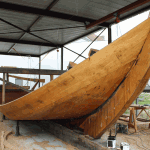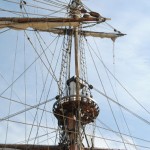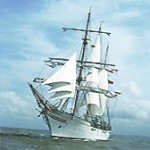 Skills used to maintain the historic tall ship Mercator in Belgium have been documented as part of an important educational resource for future traditional boat builders.
Skills used to maintain the historic tall ship Mercator in Belgium have been documented as part of an important educational resource for future traditional boat builders.
The beautiful vessel is maintained as a sailing ship museum in Oostende and on-going conservation work to preserve the 78.5 meter barkentine is carried out by a dedicated team of volunteers. However, the average age of the team is above 70 and it has been feared their wealth of knowledge in traditional skill such as rigging, splicing and riveting might not get handed down to future boat builders.
So this expertise has been painstakingly recorded – along with those at numerous boatyards in Holland, Belgian and the UK – for the EU’s Traditional Maritime Skills project. The TMS project aims to provide extensive teaching frameworks for the next generation via its free virtual learning environment.
Mercator’s boatswain Philippe Van Thournout, who helped work on her maintenance programme for more than 20 years, said: “It is very important that we keep these skills alive as it is part of our heritage and economy. There is not much interest among young people nowadays in these traditional techniques. All our volunteers working on Mercator are aged over 70.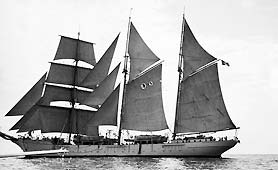
“Sharing the skills via the internet through this project will keep them alive, attract greater interest among the young and help guarantee that vessels such as Mercator are preserved.”
Mercator played an important role in Europe’s nautical history. She was built in Leith in Scotland in 1932 for the Belgium Maritime Association. She was to be used as a sail training ship for the Belgium Navy as well as for other purposes and was rigged out as a barkentine. In a good wind she could easily make 13 knots with her sail lay-out.
Her first trip was on September 5th 1932 and by 1940 she had covered more than 161,686 miles.
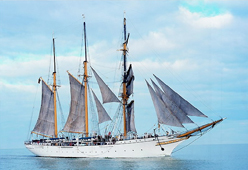 In 1936 she was given the honour of returning the body of the Flemish missionary, Father Damiaan, from Molokai Island in Hawaii to Belgium. She then came under the British Admiralty in 1943 as a submarine depot ship. After WW2 she returned to Belgium, towed by the “Empire Mary”, to sail again on Belgium’s River Scheldt.
In 1936 she was given the honour of returning the body of the Flemish missionary, Father Damiaan, from Molokai Island in Hawaii to Belgium. She then came under the British Admiralty in 1943 as a submarine depot ship. After WW2 she returned to Belgium, towed by the “Empire Mary”, to sail again on Belgium’s River Scheldt.
She became a sail training ship again in 1951 taking part in many Tall Ships Races and was finally taken out of service in 1960. It was then decided to maintain her as a sailing ship museum and keep her in her original condition to show people what life was like on these vessels.
In 1964 she was brought to the yacht haven in Oostende and has remained there ever since. The yacht haven was renamed the “Mercator” after her as she dominates the Ostend skyline.



 sending...
sending...